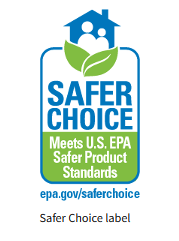Always choose the cleaner, sanitizer or disinfectant product with the least hazardous ingredients that will accomplish the task at hand. Read the label to understand how to properly use the product, and follow any safety and precautionary statements provided on the label.
Workplaces use cleaning chemicals to ensure the cleanliness of their buildings. Workers who handle these products include building maintenance workers, janitors and housekeepers. Some cleaning chemicals can be hazardous, causing problems ranging from skin rashes and burns to coughing and asthma.
The Environmental Protection Agency (EPA) defines cleaners, sanitizers and disinfectants as follows:
Cleaners remove dirt through wiping, scrubbing or mopping.
Sanitizers contain chemicals that reduce, but do not necessarily eliminate, microorganisms such as bacteria, viruses and molds from surfaces. Public health codes may require cleaning with the use of sanitizers in certain areas, like toilets and food preparation areas.
Disinfectants contain chemicals that destroy or inactivate microorganisms that cause infections. Disinfectants are critical for infection control in hospitals and other healthcare settings.
Cleaners, sanitizers and disinfectants serve different purposes, and it is important to choose the least hazardous cleaning chemical that will accomplish the task at hand. Before purchasing cleaning products, determine whether or not sanitizing or disinfecting is necessary. If sanitizing or disinfecting is not required, then choose a cleaner. In general, disinfectants and sanitizers are more hazardous than cleaners.
If sanitizing or disinfecting is necessary, be sure that the product purchased is effective for the microorganisms being targeted. EPA regulates sanitizers and disinfectants (termed “antimicrobial pesticides”). For further information, see EPA’s webpage “What Are Antimicrobial Pesticides?” (www.epa.gov/pesticide-registration/what-are-antimicrobial-pesticides ).
Potential Health Problems Caused by Cleaning Chemicals
Many factors influence whether a cleaning chemical will cause health problems. Some important factors to consider include:
- Chemical ingredients of the cleaning product;
- How the cleaning product is being used or stored;
- Ventilation in the area where the cleaning product is used;
- Whether there are splashes and spills;
- Whether the cleaning product comes in contact with the skin; and
- Whether mists, vapors and/or gases are released.
Chemicals in some cleaning products can be irritating to the skin or can cause rashes. Cleaning products that contain corrosive chemicals can cause severe burns if splashed on the skin or in the eyes (e.g.; drain cleaners, toilet bowl cleaners, acid-based cleaners).
Mists, vapors and/or gases from cleaning chemicals can irritate the eyes, nose, throat and lungs. Symptoms may include burning eyes, sore throat, coughing, trouble breathing and wheezing. Mixing cleaning products that contain bleach and ammonia can cause severe lung damage or death.
Safe Work Practices When Using Cleaning Chemicals
- Never mix cleaning products that contain bleach and ammonia;
- If cleaning chemicals must be diluted, follow instructions on how to correctly dilute the cleaners;
- Follow label directions on the use, storage and emergency spill procedures;
- Use the proper protective equipment needed, such as gloves and goggles;
- Ensure that all containers of cleaning products and chemicals are labeled to identify their contents and hazards (e.g.; when transferring the product into another container or spray bottle);
- Make sure there are operating ventilation systems as needed during cleaning tasks to allow sufficient air flow and prevent buildup of hazardous vapors; and
- Always wash up with soap and water after using cleaning chemicals.

Criteria for Safer Chemical Ingredients – https://www.epa.gov/saferchoice.
Each chemical ingredient in a formulation has a function in making a product work – whether it is to aid in cleaning by reducing surface tension (surfactants), dissolve or suspend materials (solvents), or reduce water hardness (chelating agents). The Safer Choice Program evaluates each ingredient in a formulation against the following Master and Functional-Class Criteria documents, as appropriate. These documents define the characteristics and toxicity thresholds for ingredients that are acceptable in Safer Choice products.
- Master criteria
- Functional-class criteria
Sources: OSHA/NIOSH INFOSHEET: Protecting Workers Who Use Cleaning Chemicals; Safer Choice Standard and Criteria, https://www.epa.gov/safechoice/standard.
